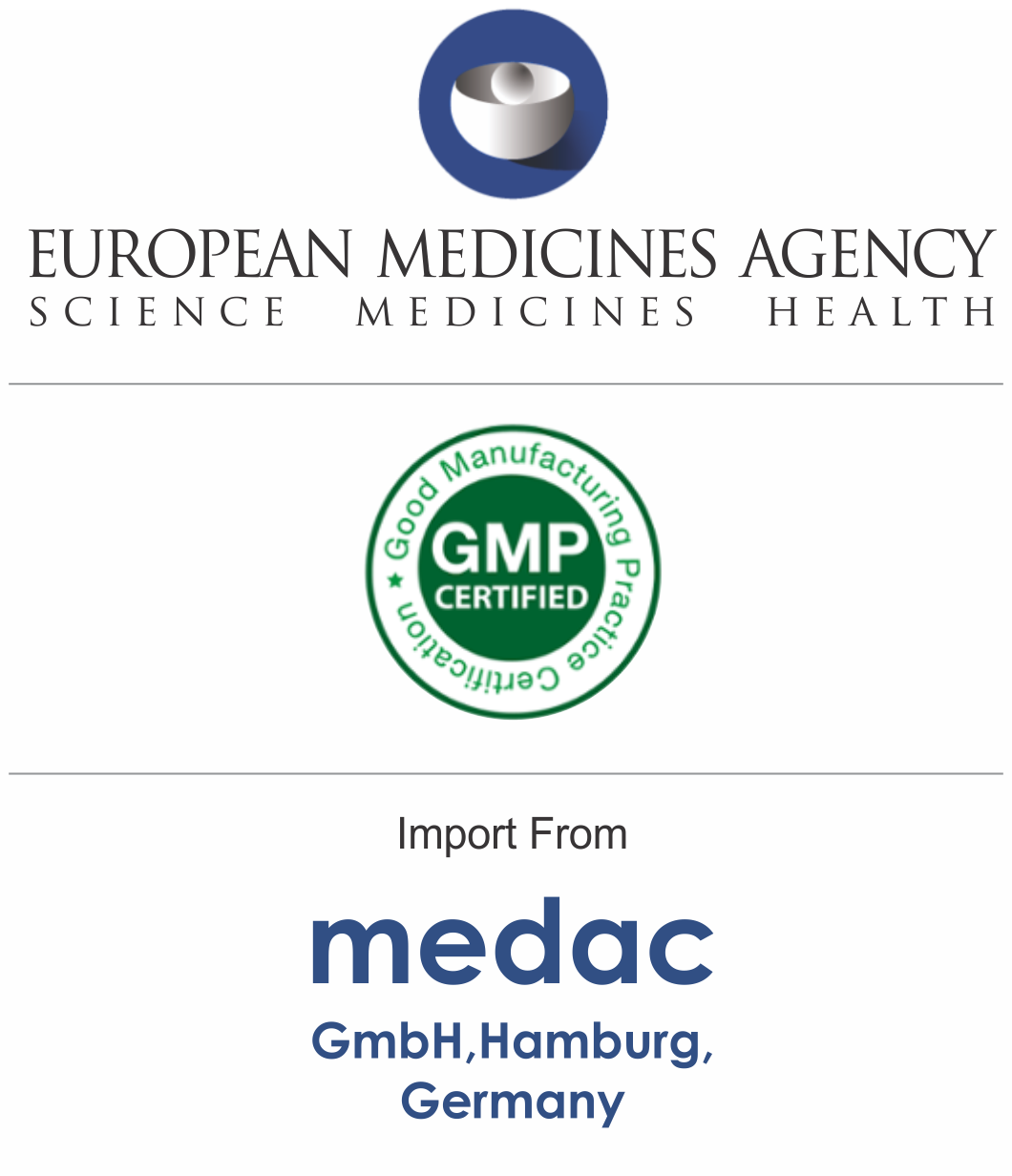


Mechanism of Action
Imidazotetrazine derivative prodrug; active metabolite MTIC methylates guanine-rich areas of DNA that initiate transcription, which lead to DNA double strand breaks and apoptosis
Indicated for the treatment of adults with refractory anaplastic astrocytoma (ie, patients with disease progression on a drug regimen containing nitrosourea and procarbazine)
Initial: 150 mg/m² PO/IV qDay for 5 days; repeat at 28-day cycles
Maintenance: May increase/maintain dose at 200 mg/m² PO/IV qDay for 5 days/28-day cycle if ANC >1500 mm³ and platelets >100,000 mm³
Infuse IV over 90 minutes
Dosage modifications
Decrease maintenance dose
Indicated for the treatment of adults with newly diagnosed glioblastoma multiforme concomitantly with radiotherapy and then as maintenance treatment
Initial: 75 mg/m² PO/IV qDay for 42 days concomitant with focal radiotherapy
Infuse IV over 90 minutes
Continue treatment
Dosage modifications (initial treatment and radiotherapy)
Maintenance
Orphan designation for treatment of newly diagnosed high grade glioma
Orphan designation for treatment of advanced metastatic melanoma
Orphan designation for treatment of nasopharyngeal carcinoma
3. Absorption
Rapidly and completely absorbed after oral administration
Peak Plasma Time: 1 hr (empty stomach); 2.25 hr (high-fat meal)
Bioequivalence: 100%; IV infusion (when administered over 90 min) is bioequivalent to same dose of oral capsule
Mean peak plasma concentration and AUC decreased by 32% and 9%, respectively when administered after a high-fat breakfast
4. Distribution
Protein Bound: 15%
Vd: 0.4 L/kg
5. Metabolism
Metabolite: Hydrolyzed at physiologic pH to 3-methyl-(triazen-1-yl) imidazole-4-carboxamide (MTIC); MTIC further hydrolyzed to to 5-amino-imidazole-4-carboxamide (AIC), which is known to be an intermediate in purine and nucleic acid biosynthesis, and to methylhydrazine, which is believed to be the active alkylating species
6. Elimination
Half-life: 1.8 hr
Clearance: 5.5 L/hr/m²
Excretion: primarily urine (~38%)
Take capsule consistently either with or without food; preferably take on empty stomach HS to avoid N/V. May consider antiemetics before/after
10% |
1-10% (selected) |
Postmarketing Reports |
Alopecia (55-69%) |
Amnesia (10%) |
Alveolitis |
Lymphopenia (55%) |
Insomnia (10%) |
Interstitial pneumonitis |
Nausea (53%) |
Abdominal pain (5-9%) |
Pulmonary fibrosis |
Vomiting (42%) |
Ataxia (8%) |
Hepatotoxicity including elevations of liver enzymes, hyperbillirubinemia, cholestasis, and hepatitis |
Headache (41%) |
Back pain (8%) |
Diabetes insipidus |
Fatigue (34%) |
Paresis (8%) |
Reactivation of infections including cytomegalovirus and hepatitis B |
Constipation (33%) |
URI (8%) |
Serious opportunistic infections, including some cases with fatal outcomes, can occur with bacterial, viral (primary and reactivated), fungal, and protozoan organisms |
Anorexia (9-27%) |
Urinary incontinence (8%) |
|
Convulsions (23%) |
UTI (8%) |
|
Thrombocytopenia (19%) |
Abnormal vision (5-8%) |
|
Rash (8-19%) |
Pruritus (5-8%) |
8. Pack size: 5’s

Thrombocytopenia may compromise cancer treatment, causing chemotherapy dose reductions, schedule alterations, or the need for platelet transfusions.
Read more
Colorectal cancer is a major cause of morbidity and mortality, being one of the most common malignant tumors in the world.
Read more
Cancer of the prostate is the most common malignancy in elderly men
Read more
Chemotherapy-induced neutropenia is a common and serious complication of myelosuppressive chemotherapy. It is associated with significant morbidity and mortality, and can increase the overall cost of providing cancer therapy.
Read more
Some types of cancer may cause bone damage leading to high levels of blood calcium and lesions that cause severe bone pain, bone masses & fractures.
Read more